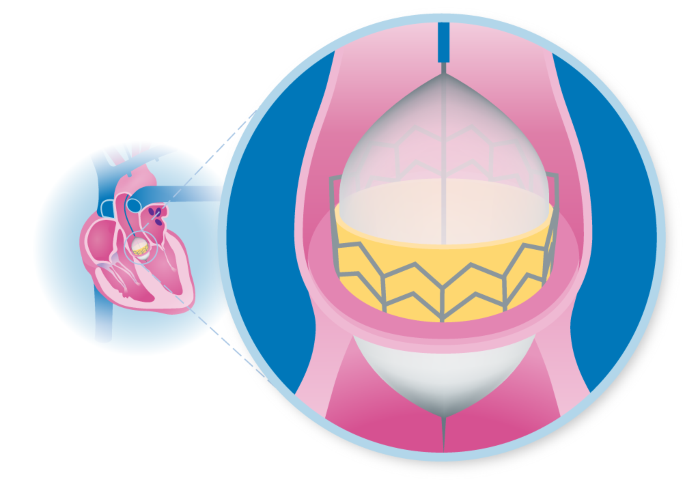
- Select a language for the TTS:
- UK English Female
- UK English Male
- US English Female
- US English Male
- Australian Female
- Australian Male
- Language selected: (auto detect) - EN
Play all audios:
Access through your institution Buy or subscribe Transcatheter aortic valve replacement (TAVR) was initially developed >1 decade ago for elderly patients with severe aortic stenosis who
were at very high or prohibitive surgical risk, but international guidelines have since expanded its use to include patients at intermediate risk, given trial data showing that TAVR was
noninferior to surgical aortic valve replacement in this patient group. Now, two new clinical trials report that TAVR with a balloon-expandable valve or a self-expanding valve is at least as
safe and effective as surgical aortic valve replacement in patients at low surgical risk. “The next step towards studying truly low-risk patients was a small one given the fact that so far,
no long-term penalties have been seen,” comments Nicolas M. Van Mieghem from Erasmus University Rotterdam, Netherlands, who was not part of the trials. “[In addition], the TAVR technique
has evolved even further towards a therapy [that is performed] under local anaesthesia, with a short stay at the intensive care unit and early discharge opportunities.” Results from the two
trials were presented at the ACC.19 Scientific Sessions in New Orleans, and simultaneously published in the _NEJM_. “Definitive conclusions regarding the advantages and disadvantages of TAVR
as compared with surgery await long-term clinical and echocardiographic follow-up,” state the researchers. All patients in the trial will be followed up for 10 years. This is a preview of
subscription content, access via your institution ACCESS OPTIONS Access through your institution Access Nature and 54 other Nature Portfolio journals Get Nature+, our best-value
online-access subscription $29.99 / 30 days cancel any time Learn more Subscribe to this journal Receive 12 print issues and online access $209.00 per year only $17.42 per issue Learn more
Buy this article * Purchase on SpringerLink * Instant access to full article PDF Buy now Prices may be subject to local taxes which are calculated during checkout ADDITIONAL ACCESS OPTIONS:
* Log in * Learn about institutional subscriptions * Read our FAQs * Contact customer support REFERENCES ORIGINAL ARTICLES * Popma, J. J. et al. Transcatheter aortic-valve replacement with a
self-expanding valve in low-risk patients. _N. Engl. J. Med._ https://doi.org/10.1056/NEJMoa1816885 (2019) Article PubMed Google Scholar * Mack, M. J. et al. Transcatheter aortic valve
replacement with a balloon-expandable valve in low-risk patients. _N. Engl. J. Med._ https://doi.org/10.1056/NEJMoa1814052 (2019) Article PubMed Google Scholar FURTHER READING * Puri, R.
et al. Future of transcatheter aortic valve implantation — evolving clinical indications. _Nat. Rev. Cardiol._ 15, 57–65 (2018) Article PubMed Google Scholar Download references AUTHOR
INFORMATION AUTHORS AND AFFILIATIONS * Nature Reviews Cardiology http://www.nature.com/nrcardio/ Karina Huynh Authors * Karina Huynh View author publications You can also search for this
author inPubMed Google Scholar CORRESPONDING AUTHOR Correspondence to Karina Huynh. RIGHTS AND PERMISSIONS Reprints and permissions ABOUT THIS ARTICLE CITE THIS ARTICLE Huynh, K. TAVR versus
surgery in low-risk patients. _Nat Rev Cardiol_ 16, 319 (2019). https://doi.org/10.1038/s41569-019-0197-y Download citation * Published: 03 April 2019 * Issue Date: June 2019 * DOI:
https://doi.org/10.1038/s41569-019-0197-y SHARE THIS ARTICLE Anyone you share the following link with will be able to read this content: Get shareable link Sorry, a shareable link is not
currently available for this article. Copy to clipboard Provided by the Springer Nature SharedIt content-sharing initiative








